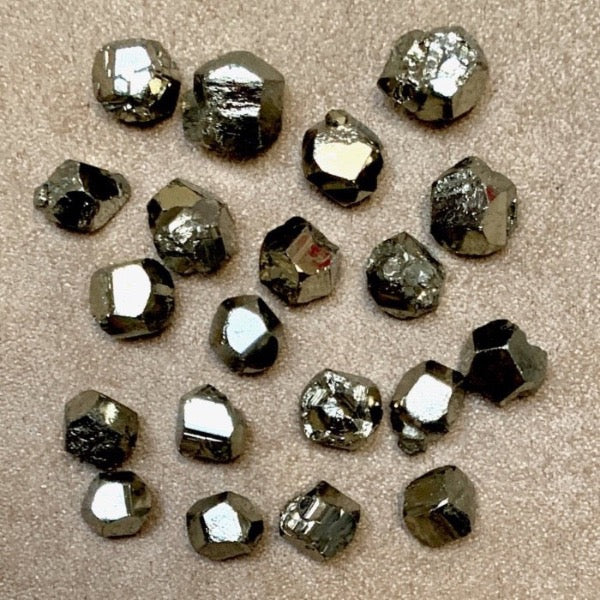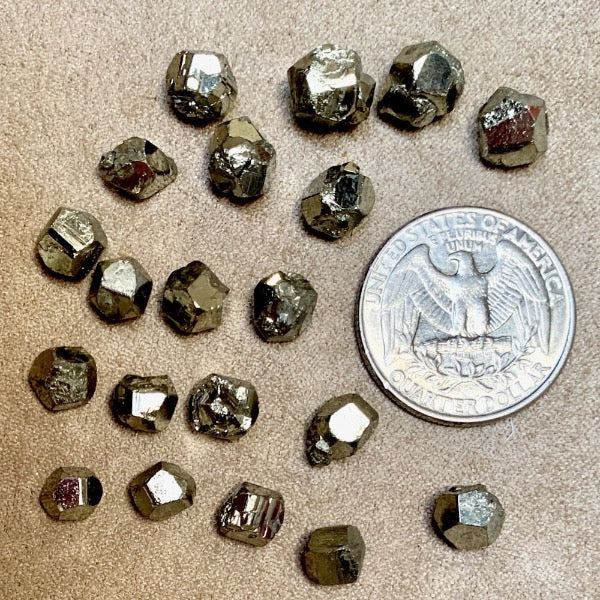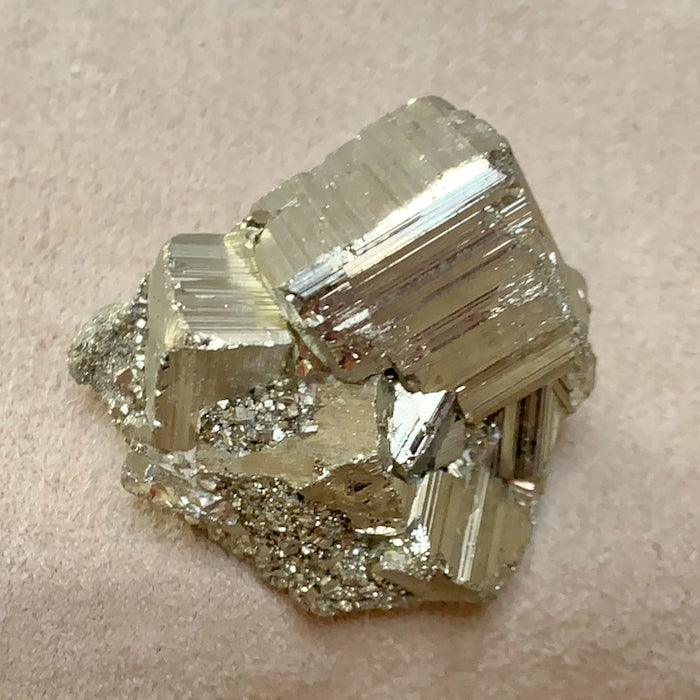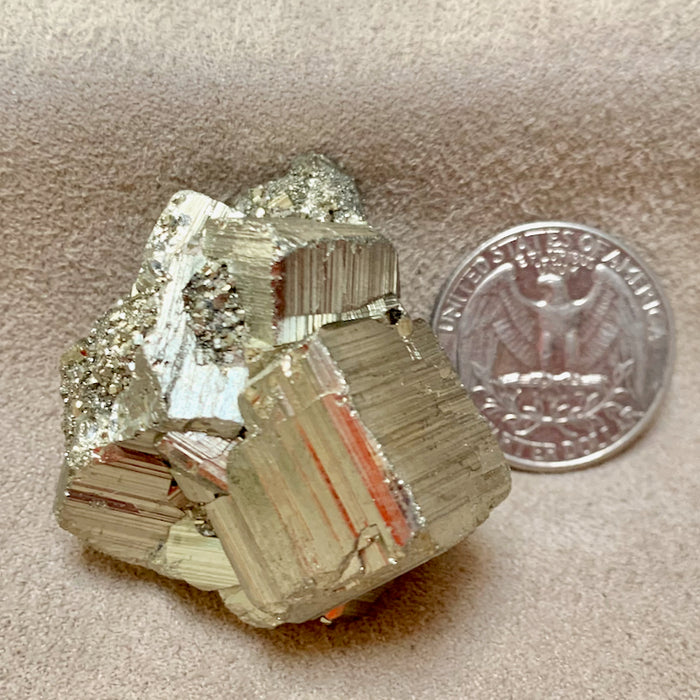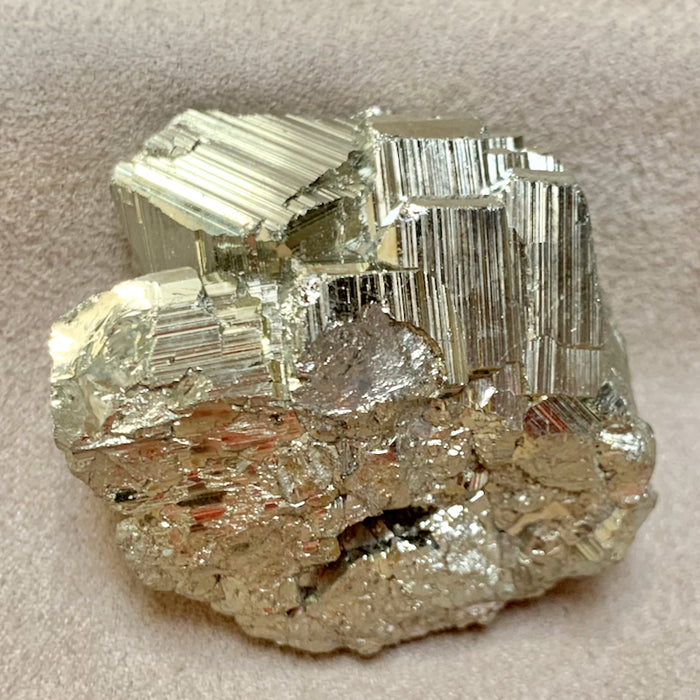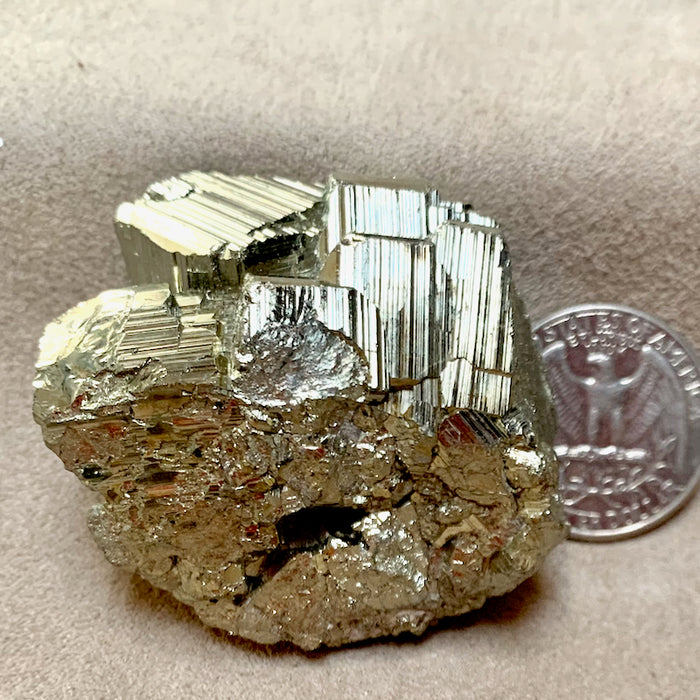Pyrite
Also known as “fools gold,” pyrite is the most common sulfide mineral. Its formula is FeS2
Discover more about pyrite HERE (mineralogy & geology; spiritual, metaphysical & healing properties)
Pyrite, "Chispas" (Peru)
- Regular
- $2.00
- Sale
- $2.00
- Regular
-
Sold Out
- Unit Price
- per
Pyrite Crystal, Set of 5
- Regular
- $2.50
- Sale
- $2.50
- Regular
-
Sold Out
- Unit Price
- per
Pyrite Cubes (Spain)
- Regular
- $5.00
- Sale
- $5.00
- Regular
-
Sold Out
- Unit Price
- per
Pyrite "Sun" (Sparta, Illinois)
- Regular
- $30.00
- Sale
- $30.00
- Regular
-
Sold Out
- Unit Price
- per
Ammonite (Pyritized) and Smoky Quartz Pendant
- Regular
- $198.00
- Sale
- $198.00
- Regular
-
Sold Out
- Unit Price
- per
Pyrite (Bulgaria)
- Regular
- $24.00
- Sale
- $24.00
- Regular
-
Sold Out
- Unit Price
- per
Sphalerite and chalcopyrite (Bulgaria)
- Regular
- $22.00
- Sale
- $22.00
- Regular
-
Sold Out
- Unit Price
- per
Pyrite, sphalerite and quartz (Peru)
- Regular
- $240.00
- Sale
- $240.00
- Regular
-
Sold Out
- Unit Price
- per
Ammonite, Pyritized (Jurassic, Germany)
- Regular
- $38.00
- Sale
- $38.00
- Regular
-
Sold Out
- Unit Price
- per
Pyrite (Peru)
- Regular
- $18.00
- Sale
- $18.00
- Regular
-
Sold Out
- Unit Price
- per
Pyrite Crystal in Matrix (Spain)
- Regular
- $58.00
- Sale
- $58.00
- Regular
-
Sold Out
- Unit Price
- per
Sphalerite, Goethite & Pyrite (Mexico)
- Regular
- $18.00
- Sale
- $18.00
- Regular
-
Sold Out
- Unit Price
- per
Galena, Pyrite & Quartz (Bulgaria)
- Regular
- $36.00
- Sale
- $36.00
- Regular
-
Sold Out
- Unit Price
- per
Pyrite Rough Post Earrings
- Regular
- $48.00
- Sale
- $48.00
- Regular
-
Sold Out
- Unit Price
- per
Pyrite (Peru)
- Regular
- $36.00
- Sale
- $36.00
- Regular
-
Sold Out
- Unit Price
- per
Pyrite (Peru)
- Regular
- $42.00
- Sale
- $42.00
- Regular
-
Sold Out
- Unit Price
- per
Chalcopyrite, Pyrite & Sphalerite (Bulgaria)
- Regular
- $80.00
- Sale
- $80.00
- Regular
-
Sold Out
- Unit Price
- per
Pyrite Crystal in Matrix (Spain)
- Regular
- $45.00
- Sale
- $45.00
- Regular
-
Sold Out
- Unit Price
- per
Pyrite Crystals (Spain)
- Regular
- $24.00
- Sale
- $24.00
- Regular
-
$24.00
Sold Out
- Unit Price
- per
Pyrite Crystal (Spain)
- Regular
- $75.00
- Sale
- $75.00
- Regular
-
Sold Out
- Unit Price
- per
Pyrite Rough Post Earrings
- Regular
- $20.00
- Sale
- $20.00
- Regular
-
Sold Out
- Unit Price
- per
Showing items 1-21 of 21.



